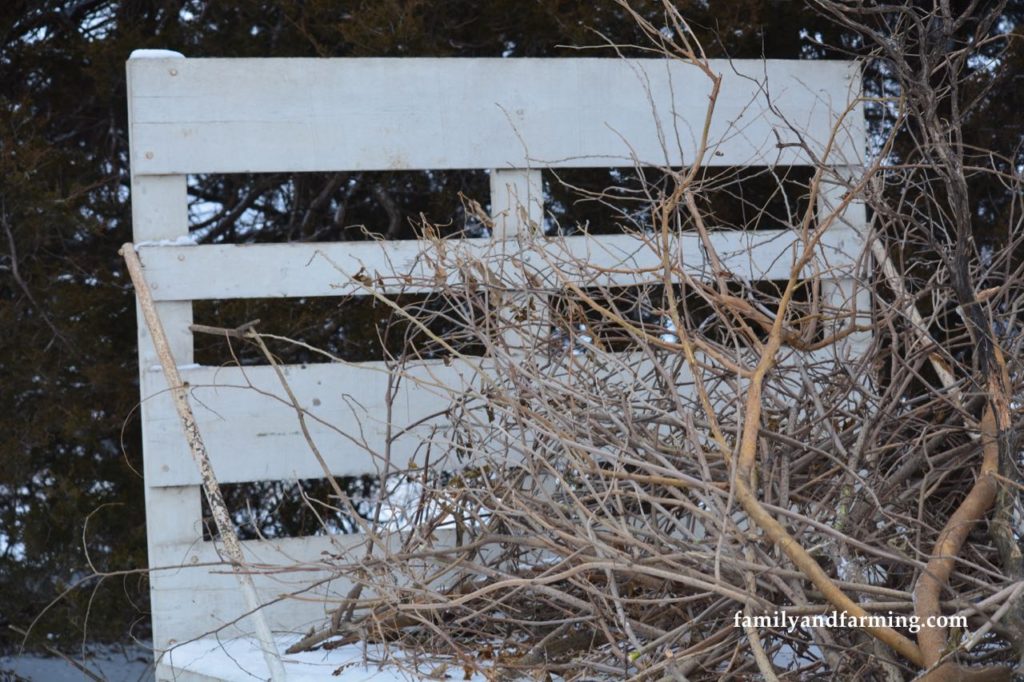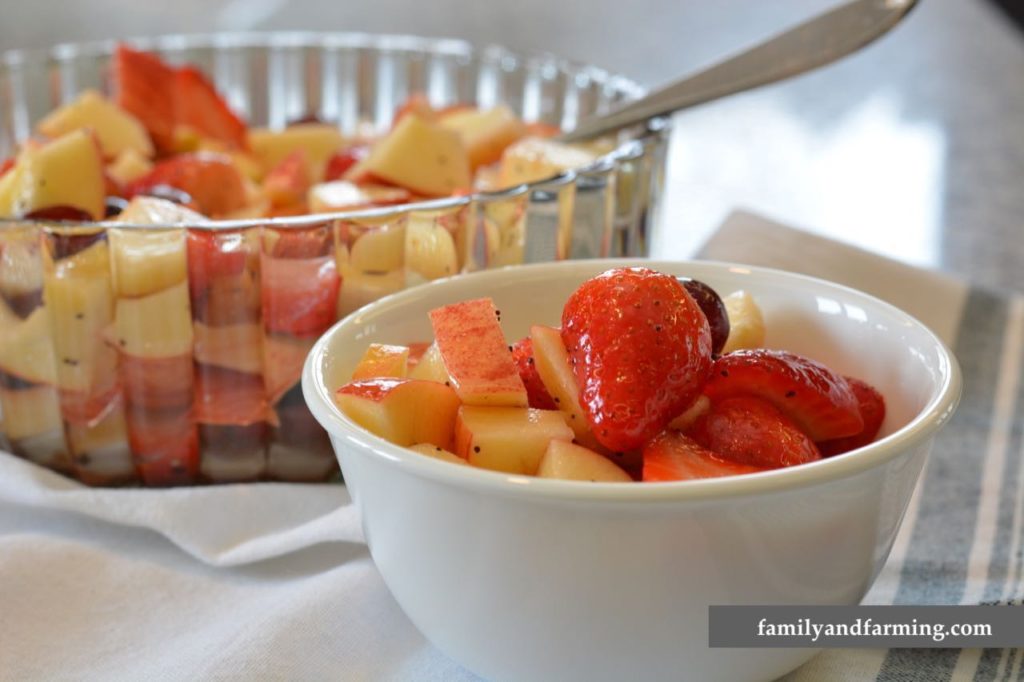We let things go! Trees, broken branches and undergrowth have gotten a bit out of control in our windbreak. We will work in January instead of the summer to cut out undergrowth and trees because it’s easier to pull out vegetation when it’s dead and the ground is not yet frozen solid. No chemicals are used, just hard work.
Cleaning out the Farm’s Windbreak in Winter
Working in the cold is better than swatting away bugs and mosquitos. Because it’s cold we won’t sweat through our clothing. It’s not a fashion show for this project. Here’s a photo of what I wore for this job.

There’s little snow on the ground and we have 3 days to do this work. The temperature range for these days is 29-31 degrees with no wind. After then a blizzard is predicted.
We start by cutting down mulberry trees that have sprouted up between these majestic cedars. We pull up piles and piles of underbrush and carry the piles to a waiting hayrack. Back and forth, bending and pulling.

The Eastern Red Cedar
People who lived on this farm planted these Eastern Red Cedars as a windbreak over 150 years ago. The cedars are in linear rows, planted with room for growth, and are a perfect windbreak for the farm. Standing under these trees, I feel connected to the unknown people who planted these towering trees over a century away from where I stand. This view makes me think of the movie The Tree of Life by a favorite director, Terrence Malick.

Windbreaks are usually planted on either the north or west corners of farms. Our farm’s cedar grove was planted in the northwest corner of the farm. The Eastern Red Cedar is actually a juniper and is one of the oldest trees in Iowa. They aren’t pretty and are considered a nuisance by some. On our farm these cedars are an asset, protecting our home and farm.
All of the trees have twisted trunks from whipping winds over the decades. We are missing one large cedar in the grove. This tree was felled by straight-line winds in June of 2010. Our grain bins could have been lost, but they were full of grain, preventing them from toppling over.
A Constant Walk
The hayrack is filled 13 times. We each log close to 6 miles per day carrying debris from one end of the windbreak grove to the hayrack. The debris is stacked in a field to be burned in the summer. (Open burning is allowed in this case.)
And then the blizzard arrives. Freezing rain, and then snow and high winds. Our windbreak does the job. The wind blows 35-40 mph Friday night from the southeast, by Saturday afternoon, it’s a howling 40-50 mph from the northwest. It would be much worse without the windbreak.
Be Blessed!
Simple Fruit Salad

After spending most of the daylight hours working outside in the cold, you probably would like to try something from the fruits of summer. Simple Fruit Salad fits that bill! If you want less Raspberry Vinaigrette, you can instead drizzle it over the fruit salad.

Simple Fruit Salad
Tools You’ll Need:
- Knife to cut fruit
- Bowl
- Wooden spoon
Ingredients:
- 3-4 apples
- 1 C strawberries
- 1 C grapes
- ½ C raspberry vinaigrette
Leave the skin on the apples. Chop up the fruit. Add vinaigrette. Chill

Discover more from Family and Farming
Subscribe to get the latest posts sent to your email.


Your pictures are beautiful, and so are your descriptives